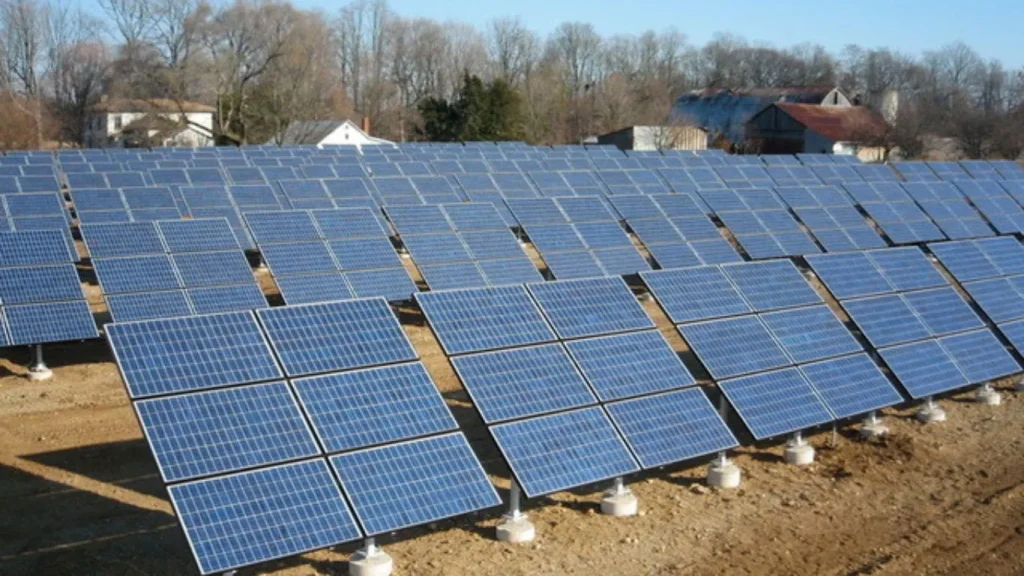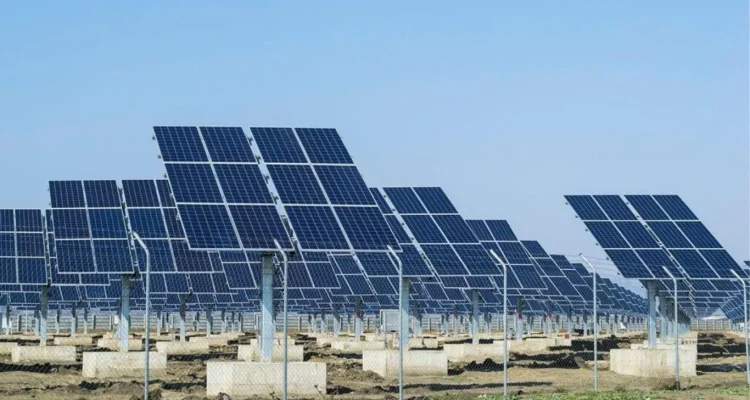Introduction
Thinking about starting a solar farm? You’re not alone. With the rising importance of renewable energy, more and more people are looking into solar farming as a viable and lucrative business. But where do you begin? In this guide, we’ll take you through the steps of starting a solar farm, from understanding the basics to navigating the legal and financial aspects.

Understanding Solar Farms
What is a Solar Farm?
A solar farm, also known as a solar park, is a large-scale installation of photovoltaic (PV) panels designed to generate electricity from the sun. These farms can vary in size, from small community projects to massive utility-scale operations that power thousands of homes.
Types of Solar Farms
There are two main types of solar farms:
- Utility-scale Solar Farms: These are large installations that generate electricity for the power grid. They are typically owned by utility companies or large corporations.
- Community Solar Farms: These are smaller projects that provide energy to local communities. They can be owned by a group of residents, a cooperative, or a municipality.
Benefits of Solar Farms
Environmental Benefits
Solar farms produce clean, renewable energy that reduces greenhouse gas emissions and decreases our reliance on fossil fuels. This helps combat climate change and reduces air pollution.
Economic Benefits
Solar farms create jobs in manufacturing, installation, and maintenance. They also provide a steady income for landowners who lease their property for solar installations.
Energy Independence
By generating their own electricity, communities and businesses can become more energy independent, reducing their vulnerability to energy price fluctuations and supply disruptions.
Initial Considerations
Assessing Solar Potential
Before starting a solar farm, you need to assess the solar potential of your site. This involves analyzing the amount of sunlight the location receives throughout the year, which can be done using solar mapping tools and satellite data.
Legal and Regulatory Considerations
Understanding the legal and regulatory landscape is crucial. You’ll need to navigate zoning laws, environmental regulations, and obtain the necessary permits. It’s advisable to consult with legal experts who specialize in renewable energy projects.
Financial Planning
Starting a solar farm requires a significant investment. You’ll need to develop a comprehensive financial plan that includes cost estimates for land acquisition, equipment, installation, and ongoing maintenance. Consider different funding options and potential revenue streams.
Site Selection
Criteria for Choosing a Location
The ideal location for a solar farm should have high solar insolation, minimal shading, and suitable land. Other factors to consider include proximity to power lines for grid connection and accessibility for construction and maintenance.
Land Requirements
Solar farms require a substantial amount of land. On average, a 1 MW solar farm needs about 5-7 acres of land. The land should be flat or gently sloping to maximize solar panel efficiency.
Zoning and Permits
Zoning laws vary by location and can impact where you can build a solar farm. You’ll need to obtain the necessary permits from local authorities, which may include environmental assessments and community consultations.
Feasibility Study
Technical Feasibility
A technical feasibility study evaluates the technical aspects of your project, including site conditions, solar potential, and grid connectivity. This study helps determine if the project is technically viable.
Economic Feasibility
An economic feasibility study assesses the financial viability of your project. It includes cost estimates, revenue projections, and a risk analysis. This study is essential for securing funding and attracting investors.
Environmental Impact Assessment
An environmental impact assessment evaluates the potential environmental effects of your project. This includes impacts on wildlife, vegetation, water resources, and local communities. Mitigation measures may be required to minimize negative impacts.
Design and Planning
Layout and Design of the Solar Farm
The layout of your solar farm should optimize the use of space and maximize sunlight exposure. This includes the arrangement of solar panels, access roads, and other infrastructure.
Selecting Solar Panels and Inverters
Choosing the right solar panels and inverters is critical for the efficiency and longevity of your solar farm. Consider factors like efficiency, warranty, and cost when selecting equipment.
Grid Connection and Infrastructure
Connecting your solar farm to the grid involves working with utility companies to install the necessary infrastructure. This may include transformers, substations, and transmission lines.
Financing Your Solar Farm
Funding Options
There are various funding options available for solar farm projects, including bank loans, private investors, and crowdfunding. Explore all options to find the best fit for your project.
Government Incentives and Grants
Many governments offer incentives and grants for renewable energy projects. These can significantly reduce your upfront costs and improve the financial viability of your project.
Private Investors
Attracting private investors can provide the capital needed to start your solar farm. Present a strong business case with detailed financial projections to secure investment.
Construction Process
Site Preparation
Preparing the site involves clearing the land, leveling the ground, and installing necessary infrastructure like roads and fences. This step is crucial for a smooth construction process.
Installation of Solar Panels
Installing solar panels involves mounting the panels on racks or tracking systems, connecting them to inverters, and wiring them to the grid. This step requires skilled labor and adherence to safety standards.
Electrical Connections and Grid Integration
Connecting your solar farm to the grid involves installing transformers, switchgear, and transmission lines. Work closely with utility companies to ensure a seamless integration.
Operations and Maintenance
Routine Maintenance Tasks
Regular maintenance is essential for the efficient operation of your solar farm. This includes cleaning panels, inspecting equipment, and performing repairs as needed.
Monitoring System Performance
Use monitoring systems to track the performance of your solar farm in real-time. This helps identify issues early and optimize energy production.
Troubleshooting Common Issues
Be prepared to troubleshoot common issues like equipment failures, shading, and weather-related impacts. Having a maintenance plan in place can minimize downtime.
Maximizing Efficiency
Techniques for Improving Efficiency
There are several techniques to improve the efficiency of your solar farm, including using high-efficiency panels, optimizing panel tilt and orientation, and reducing shading.
Use of Tracking Systems
Tracking systems can increase energy production by allowing solar panels to follow the sun’s movement. This can significantly boost the efficiency of your solar farm.
Energy Storage Solutions
Energy storage solutions like batteries can store excess energy for use during low sunlight periods. This helps ensure a stable energy supply and maximizes revenue.
Legal and Compliance
Understanding Local Regulations
Stay informed about local regulations and ensure your project complies with all legal requirements. This includes zoning laws, environmental regulations, and building codes.
Ensuring Compliance with Environmental Laws
Compliance with environmental laws is crucial to avoid fines and legal issues. This includes managing waste, protecting wildlife, and minimizing environmental impacts.
Contract Management
Effective contract management is essential for the successful operation of your solar farm. This includes contracts with suppliers, contractors, and utility companies.
Marketing and Selling Your Energy
Power Purchase Agreements (PPAs)
Power purchase agreements (PPAs) are contracts to sell your energy to a buyer, usually a utility company or a large corporation. PPAs provide a stable revenue stream for your solar farm.
Selling Energy to the Grid
Selling energy to the grid involves feeding excess electricity into the power grid. This requires a connection agreement with your local utility company.
Marketing Your Solar Farm
Marketing your solar farm involves promoting its environmental and economic benefits to attract buyers and investors. Use social media, press releases, and community events to raise awareness.
Future Trends in Solar Farming
Technological Advancements
Stay updated on technological advancements in solar energy. Innovations like more efficient panels, advanced inverters, and smart grid technologies can enhance the performance of your solar farm.
Emerging Markets
Explore emerging markets for solar energy. Developing countries and regions with high solar potential offer significant opportunities for expansion.
Sustainability Practices
Implementing sustainability practices can improve the environmental and social impact of your solar farm. This includes using eco-friendly materials, conserving water, and supporting local communities.
FAQs
How much land is needed for a solar farm?
The amount of land needed for a solar farm depends on the size of the installation. On average, a 1 MW solar farm requires about 5-7 acres of land.
What are the costs involved in starting a solar farm?
The costs of starting a solar farm include land acquisition, equipment, installation, permits, and ongoing maintenance. A rough estimate for a 1 MW solar farm is around $1 million to $1.5 million.
How long does it take to build a solar farm?
The time it takes to build a solar farm varies based on the size and complexity of the project. Typically, it takes about 6 months to 1 year from planning to completion.
Can I start a solar farm on residential property?
Starting a solar farm on residential property is possible but may be subject to zoning laws and regulations. Smaller community solar projects are more feasible for residential areas.
What are the main challenges in running a solar farm?
The main challenges in running a solar farm include securing funding, navigating regulatory requirements, maintaining equipment, and ensuring a consistent energy supply.
Conclusion
Starting a solar farm is a complex but rewarding venture. By following these steps, you can navigate the challenges and set up a successful solar farm that contributes to a sustainable future. Renewable energy is the way forward, and your solar farm can play a crucial role in this green revolution. So, why wait? Start planning your solar farm today!


Congratulation!